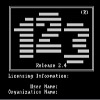In the late 1970s and early 1980s electronic spreadsheet programs became important tools for computer-assisted reporting.
Two of the first programs were VisiCalc and Lotus 1-2-3.
The introduction of VisiCalc came in 1979.
Lotus 1-2-3‘s original release date was 32 years ago today, on January 26, 1983.

Another spreadsheet you may have heard of, Microsoft’s Excel, appeared two years later.
The following video describes Lotus 1-2-3 and its early success with the IBM personal computer.
“Credit for the invention of the spreadsheet goes to Dan Bricklin and Bob Frankston, who created VisiCalc for the Apple II. VisiCalc required 32k of memory to run. A chart from a roundup of spreadsheets in the 1982 Personal Computing magazine lists eighteen spreadsheets. Most ran on either the Apple II or on machines with the CP/M operating system.
….In January 1983, Lotus introduced Lotus 1-2-3 at a price of $495. It was immediately acknowledged to be a better product than VisiCalc. In December 1982 Gregg Williams wrote in Byte that 1-2-3 had ‘many more functions and commands than VisiCalc’ and that 1-2-3 was ‘revolutionary instead of evolutionary.’ PC World called it ‘state of the art.’
….When Excel first appeared in 1985, it was offered only for the Macintosh. Jerry Pournelle, a well-known columnist for Byte (and science-fiction author), wrote (incorrectly but nonetheless prophetically): ‘Excel will make the Mac into a serious business machine.’
In late 1987 Microsoft ported Excel to the PC (running under Windows) and Borland introduced Quattro for DOS. Thus began a market struggle between Microsoft, Borland, and Lotus….”
— “Chapter 8 Major Markets — WordProcessors and Spreadsheets”
The University of Texas at Dallas
A look back at the first five years of the Lotus company:
“On May 14, (2013) IBM quietly announced the end of the road for 1-2-3, along with Lotus Organizer and the Lotus SmartSuite office suite. Lotus 1-2-3’s day is done.
Far faster than its competition, such as SuperCalc and Microsoft’s first spreadsheet, MultiPlan, Lotus 1-2-3 would become both IBM’s and Microsoft’s first killer app. With the opening of the Intel architecture and MS-DOS to IBM PC clones, Lotus 1-2-3 became the essential application for the 1980s PC revolution.
….As for 1-2-3 itself, 30 years after it helped start the personal computing revolution, this essential PC program will be put out to pasture.”
— “Goodbye, Lotus 1-2-3”
ZDNet, May 15, 2013






